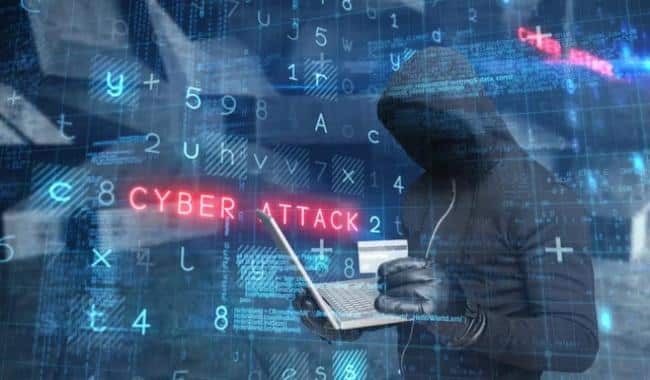Network forensics is the monitoring and analysis of network data to detect and investigate intrusions. By intercepting and analyzing data packets, security professionals may identify the attackers, understand the impact of an attack, and track down its origins. Investigating a cyberattack as soon as possible is crucial in the fast-paced digital world of today. Security teams can reduce harm before the problem worsens by acting swiftly thanks to rapid analysis. This prompt response is crucial for protecting data and reducing the frequency of interruptions to operations. This article contrasts real-time network forensics with conventional network forensics, emphasizing the technological developments that make real-time inquiry a revolutionary approach in cybersecurity.
Network Forensics: Investigating Cyber Attacks in Real-Time

-
Content
- What is Network Forensics?
- Key Steps in Network Forensics Investigation
- Real-Time Network Forensics
- Investigating Cyber Attacks in Real-Time
- Conclusion
-
Content
- What is Network Forensics?
- Key Steps in Network Forensics Investigation
- Real-Time Network Forensics
- Investigating Cyber Attacks in Real-Time
- Conclusion
What is Network Forensics?
1. Definition and Scope
In network forensics, network data is captured, recorded, and looked at to find proof of hacks or security holes. Its main goal is to keep an eye on data as it moves between networks so that illegal activity can be found and stopped.
2. Difference Between Network Forensics and Computer Forensics
Computer forensics looks at data that is stored on machines, while network forensics looks at data that is being sent. Network forensics is important for finding ongoing risks because it tracks real-time moving data over a network. This is different from computer forensics, which mostly looks at static data like hard drives.
3. Role of Network Forensics in Cyber Defense
Network forensics is essential to contemporary cybersecurity because it helps security teams react swiftly and offers insights into how an attack happened. It helps businesses to strengthen their defenses, find weaknesses, and collect vital digital evidence for court cases.
Key Steps in Network Forensics Investigation
1. Data Collection from Network Traffic
In network forensics, the first thing that is done is data from network activity is collected. Investigators can follow the flow of information across a network and find strange trends or hostile activity by recording bits of data in real time. This step is important for both real-time tracking and study of the past. It lets defense teams gather important digital proof for further research.
2. Preservation and Storage of Evidence
After gathering data, the next important step is to keep the proof safe by saving it properly. For legal and technical reasons, it is very important to make sure that the security of the data that was recorded stays intact. If you handle this digital proof the right way, it can be used without the risk of being tampered with during an investigation or in court.
3. Examination and Analysis of Captured Data
Forensic analysts analyze the collected data to determine the kind of cyberattack once the evidence has been secured. Investigators may examine network data and determine the attack’s source, target, and effect by using a variety of network forensics tools, such as packet analyzers. These tools aid in identifying weaknesses and provide information about the actions of the attacker.
4. Reporting and Documentation for Legal Proceedings
Lastly, all of the investigation’s results need to be carefully recorded. Reporting is an essential first step, especially when legal action is being considered. The reports generated provide a detailed account of the incident, which is essential when working with digital forensics companies or presenting evidence in court. Having the right paperwork in place makes sure that the investigation is open and can stand up to legal review.
Real-Time Network Forensics
1. How Real-Time Monitoring Works
In network forensics, real-time tracking lets you find strange behavior right away as data moves through a network. Real-time tracking constantly records messages, notifying security teams as soon as an anomaly is found, unlike traditional methods that study data after an event. This kind of preventative thinking is necessary to stop strikes before they do a lot of damage. Advanced network forensics technologies allow businesses to identify threats like malware, unlawful access, and Distributed Denial of Service (DDoS) assaults in real time. They can react to situations faster as a result.
2. Tools and Techniques for Real-Time Packet Capture
In network forensics, different kinds of tools are used to record and look at live network data. A lot of people know that tools like Wireshark and NetFlow monitors can record data packets and give thorough reports on how well a network is working. Real-time packet inspection with Wireshark is very useful for forensic teams, who can look into specific parts of network data. SalvationDATA tools are very useful for investigations because they can do complicated tasks like packet capture and forensic analysis.
Along with these tools, methods such as deep packet inspection (DPI) and flow analysis are often used. With DPI, agents can sort through a lot of network data and focus on the information that is most important to their case. On the other hand, flow analysis looks at how the network works as a whole and finds trends that could mean bad things are happening.
3. Benefits of Real-Time Investigation for Quick Incident Response
Real-time network forensics’ main benefit is that it can give you instant feedback during a cyberattack. When security teams have real-time data, they can move quickly to stop threats before they do more damage. Companies can avoid data breaches, lessen financial loss, and protect important systems by finding attacks as they happen.
Significant legal advantages are also provided by real-time forensics. To guarantee that the data is acceptable in court, digital forensics evidence must be gathered promptly. The case against hackers is strengthened when security personnel are able to provide a thorough, moment-by-moment description of an assault. Moreover, digital forensics tools used in real-time investigations ensure that the evidence collected is both accurate and complete, which is vital for regulatory compliance.
Investigating Cyber Attacks in Real-Time
1. Real-Time Case Study: Stopping a DDoS Attack
A banking firm was hit by a Distributed Denial of Service (DDoS) attack in 2021, which made it very hard for them to use their online services. The security team saw the strange increase in traffic right away thanks to real-time network analysis. Using real-time data forensic tools like Wireshark, they were able to find the rogue IP addresses that were behind the attack. These IP addresses were blocked right away, stopping the attack before it could do more damage to the institution’s systems.
2. Common Attack Vectors
Today, network weaknesses are used in a lot of cyberattacks, like DDoS, ransomware, and scams. DDoS attacks send too much traffic to a network, locking out users. Ransomware, on the other hand, encrypts data and holds it hostage until a price is paid. Phishing, on the other hand, pretends to be real communications to get people to give out private information. Businesses are at great risk from these attack routes, and they need to be watched in real time in order to find and stop these threats as they happen.
3. Role of Real-Time Data in Preventing Attack Escalation
Real-time info is very important for stopping cyberattacks from getting worse. Attacks can be stopped before they spread by keeping an eye on and studying network data as they happen. Having real-time vision helps stop more holes from being used and lessens the damage of an attack. For example, by integrating data loss prevention solutions, organizations can automatically detect and block unauthorized attempts to exfiltrate sensitive data during an attack. This ensures that even if a breach occurs, critical information remains protected.
Conclusion
Understanding what is network forensics is crucial in today’s cybersecurity landscape. It includes recording and studying network data to look into cyberattacks, giving you a picture of risks in real time. Firms can quickly react to attacks like DDoS or ransomware and keep important digital proof safe for court hearings by using advanced network forensics tools like Wireshark and data loss prevention solutions.
For those interested in mastering this field, several network forensics courses provide in-depth training on the tools and techniques used for real-time investigation. These studies give security experts the skills they need to keep networks safe and stop data breaches. As the digital world grows, network forensics is still an important part of protecting against cyber risks that are always changing. It helps with faster reaction times and better issue resolution.




